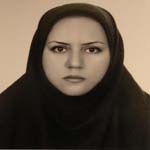Study of the Inappropriate and Mechanistic Applications of Vladimir Propp’s Morphology Theory in the Persian Literary Texts
Structuralism is one of the most important areas of the modern literary theory, which has contributed to the creation of new subjects, the evaluation of similarities and differences, and the possibility of the analysis of the Persian literary texts based on standard universal models. Recently, Western literary theories have been increasingly used in the analysis of many literary research studies in Iran, aiming to shed some light into the hidden aspect of literary works and provide new insights. And few studies have ever not used structural and morphological approaches in their literary analysis. Based on a review of the Persian literary morphological studies conducted in different decades, the present study aimed to analyze the growth of them qualitatively and quantitatively and also to analyze their literary genres. Further, it investigated the degree to which Propp’s morphology theory has been used in a standard scientific way in these texts. Finally it was concluded that the inappropriate and mechanistic applications of Propp’s morphology theory in the Persian literary texts have led to inappropriate theory selection, simplification story elements, disregarding the goal and context of the theory, repetition of the method, poor introduction, and unrelated conclusion.
-
The internal transformation of two romantic concepts (naturalism and personal feelings) within the scope of politics in the works of Forough Farokhzad and Simin Behbahani
Farzad Rostami*, Mahboobeh Khorasani
Journal of Literary Research, -
Investigating the role of animals in the common proverbs of Rostam city
Gholamali Mohammadi, Atamohammad Radmanesh *,
Journal of Iranian Regional Languages and Literature,


